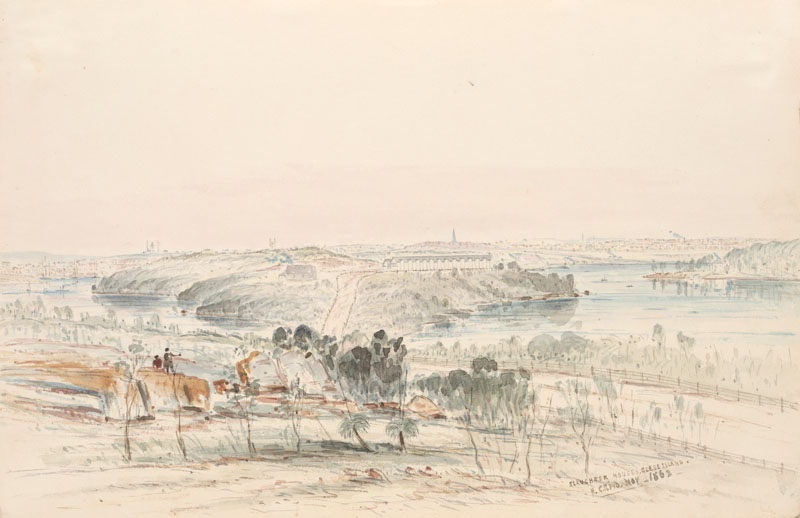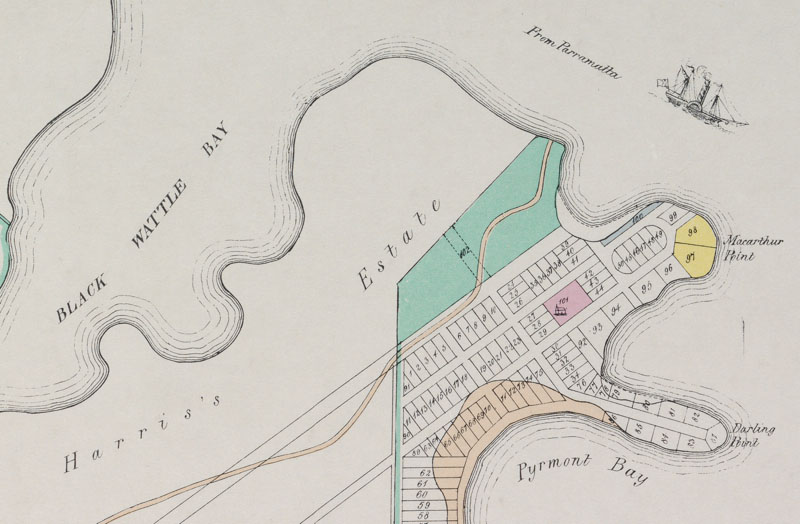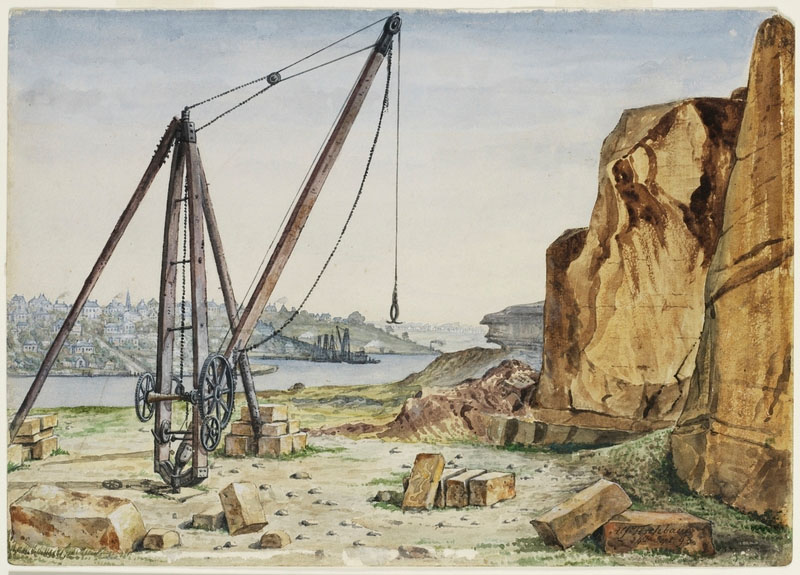McCafferys Hill
Date Built: 2002-2004
Architect: Daryl Jackson Robin Dyke
McCafferys Tower, Mews, Johns Court, The Stables, Chalet, Cliff Top. 17-storey tower, three-and four-storey buildings. Highest point of the peninsula. Overlooks Saunders’ quarries. Site of McCafferys haulage company
McCafferys Hill
1850
When John Macarthur died, his estate was subdivided and industries grew on the waterfront. Shipyards were the hub of local development, attracting related industries such as timber yards, smelters and foundries. McCafferys hill commanded views of developments below. Quarrying began near the shore, first for ballast, then for sandstone to create Sydney’s new public buildings: Paradise Quarry opened in 1860, south of the hill.
To the north of the hill, a wooden bridge linked Glebe Island to Pyrmont in 1857 allowing cattle to (and carcasses from) Glebe Island abattoirs to cross the peninsula. City Iron Works opened in 1865 (where evolve* now stands). This enterprise burned 2,500 tons of coal each year, and produced (among other things) angle iron for Louisa, the first iron ship built in Australia. Until the 1870s the smoke and noise of the City Iron Works dominated the Pyrmont shoreline.
Most workers lived close to their jobs: by 1850 Pyrmont boasted 130 dwellings. Pubs opened: so did churches – a Presbyterian Chapel in 1842, St Bartholemew’s Anglican Church in 1850, a school in Mount Street in 1857, and St Bede’s Catholic Church in 1867.
Roads were built, and bridges to Glebe and the city; in 1856 the railway reached Darling Harbour. In 1864 a police station protected a precinct that had been incorporated into Sydney since 1844, centred on the anchorage of Elizabeth Macarthur Bay.











